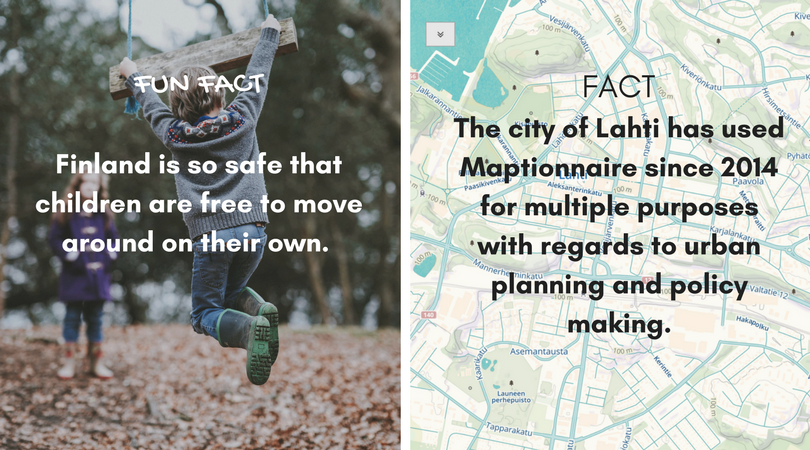In 2013, Lahti’s newly elected city council set a strategic goal to make Lahti a child-friendly city. This meant not only increasing the resources of child and family-related services, but also the comprehensive consideration of children in all urban development endeavors.
For Lahti’s urban planners, this meant a need to focus on solutions that would facilitate them in understanding the children’s perspective and incorporating it into their planning processes.
Maptionnaire for Child-Friendly Urban Design
Following positive experiences from other projects where map-based surveys had been used in school environments, Lahti’s planners decided to use Maptionnaire in their work for targeting children. Check this article to know more about children influencing city planning with community engagement tools.
One of the planning projects within this scope was to gather knowledge from local kindergartens on their use of urban green areas. The aim was to create a database that would serve the work of planners, street designers and forest managers.
Using Maptionnaire, the planners designed a map survey to understand which urban green areas kindergartens use for their activities, how these areas get used, what features children value in them, and what routes do the groups use to access them.
The planners aim was to create a comprehensive dataset covering the whole city and all kindergartens, so for the sake of resources, kindergarten teachers were the respondents of the survey, based on their knowledge of daily outdoor activities at their facility.
Here is one more example of urban planners being interested in kids’ perspectives and activities (but not only). OBB Engineering in the Netherlands used Maptionnaire to source opinions from people in various age groups, including kids. These residents’ views directly informed the planning projects and urban spaces.
The Outcome: Making Child-Minded Improvements
The data Lahti’s planners received through this process has helped to make the city more child-friendly. Being able to stay aware of the forest areas that kindergarten children use and the characteristics that children value in them, has allowed the city to execute forest management work in consideration of the children’s preferences.
Knowledge about the routes along which children walk to the urban green areas has allowed the city to take street safety better into account in specific points.
Following the feedback, the city also made child-minded improvements, such as the installment of a small picnic table and benches in one forest site. In another case, the children were provided a public path to access their closest green area through a private housing lot.
The combination of a committed team of urban planners and a rich data set gathered using Maptionnaire, has enabled a process for Lahti’s urban green area development that cherishes the child-friendly qualities of green spaces and, ultimately, supports the use of nature for outdoor activities within early childhood education.
We managed to collect an amazingly useful data set. Truthfully, we couldn’t have done it without using Maptionnaire!
Johanna Palomäki - Master Planning Architect

UNICEF Finland has awarded Lahti as a child-friendly city in 2015 and 2018.
You can also learn more about a participatory budgeting project in Lahti done with the Maptionnaire Community Engagement Platform.








.jpeg)
.webp)

.webp)


.webp)
.png)














































